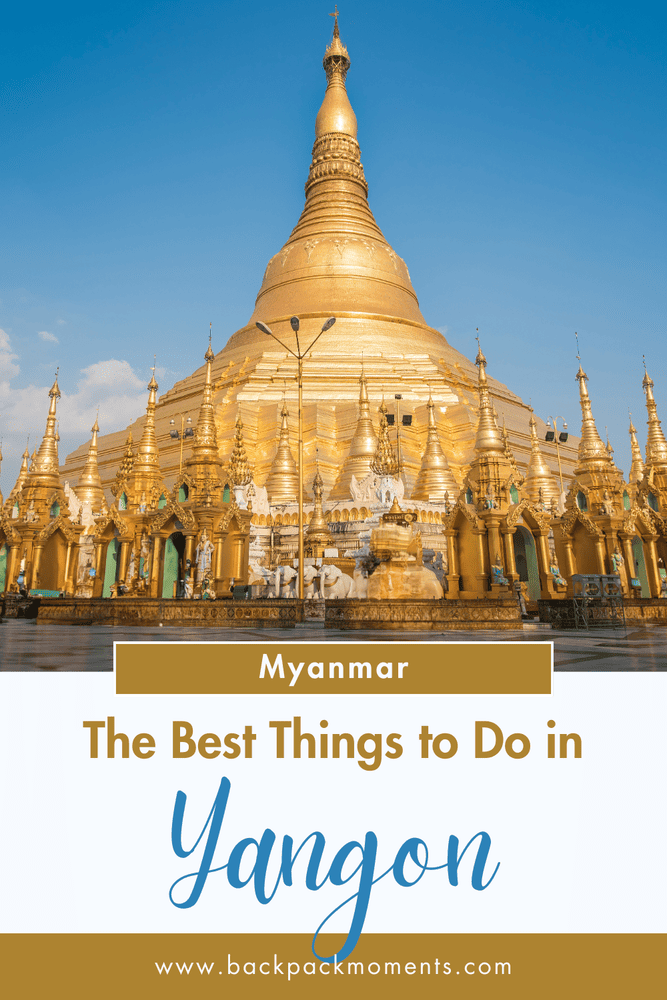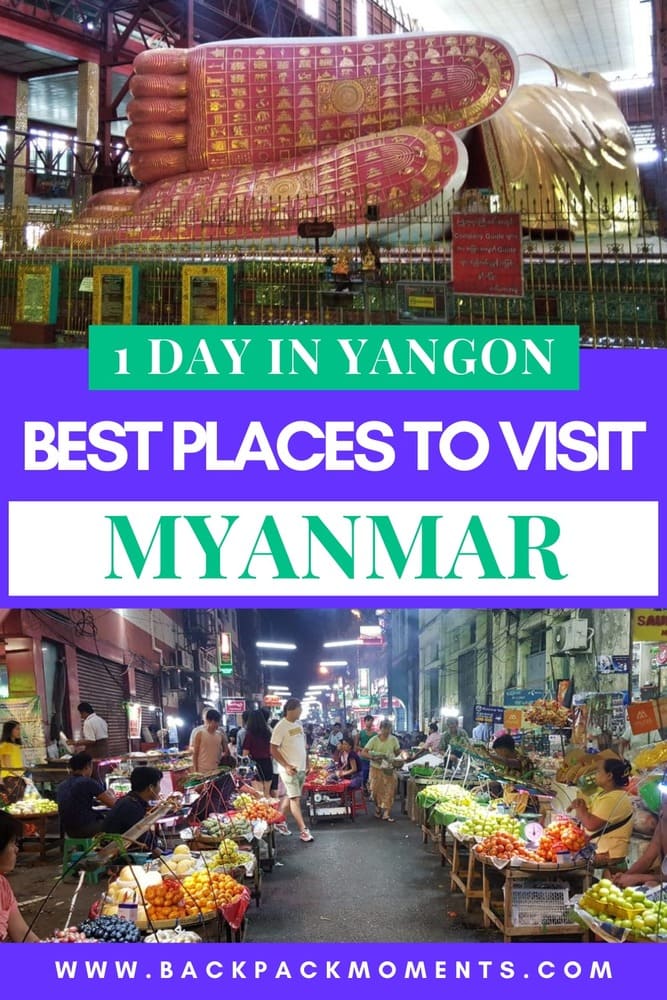1 Day in Yangon: The Best Places to Visit
This post may contain affiliate links. If you make a purchase using one of these links, I may receive a small reward at no extra cost to you. See my Disclosure Policy for more information.
Yangon… such a chaotic and colorful city.
These moss-covered, blackened residential blocks. These crowded, stuffy sidewalks where vendors sell everything from newspapers to fruits to dried fish. This perfectly orthogonal grid of streets (“thank you”, brits). These hidden mosques, mandirs, and churches…

In the chaos, as with the other megapolises of Southeast Asia, there is an order that locals understand and governs their colorful everyday lives.
I’d like to show you a bit of it all. Let me take you on a 1-day tour of Yangon, the way I saw it. Valuable tips inside!
Morning in Yangon
It’s best to stay somewhere in Downtown Yangon. Anywhere near Sule Pagoda Road is fine. As far west as 10th Street or as far east as Thein Phyu Road is also quite alright.
Check hotels in Yangon. If your hotel or hostel doesn’t have a breakfast buffet (many do), then without further ado…
Breakfast in Downtown Yangon
Yangon is buzzing in the morning. Everybody is in a rush to get somewhere and there’s a lot of action on the streets.
Breakfast places are also busy. And they are plentiful and diverse.
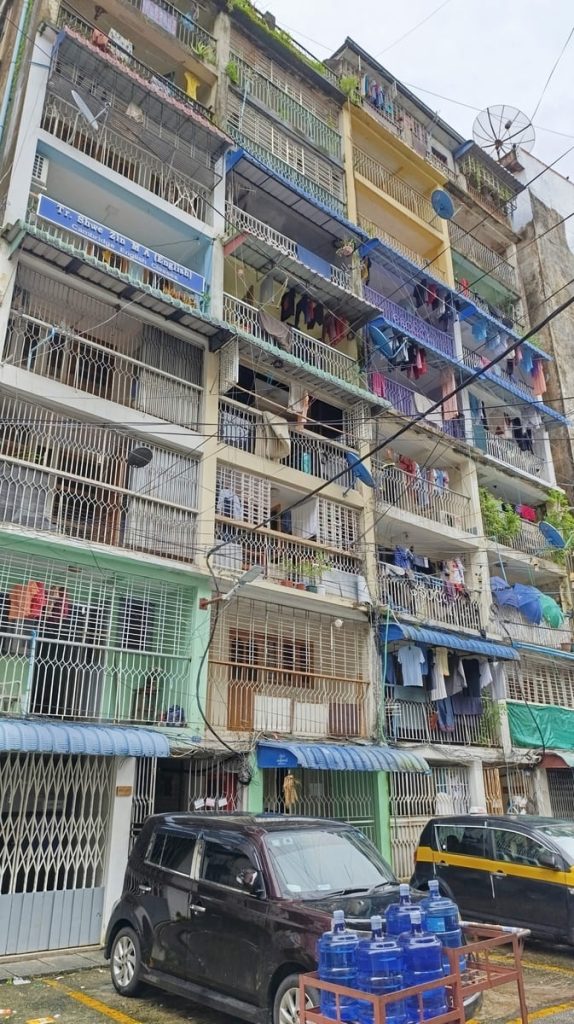
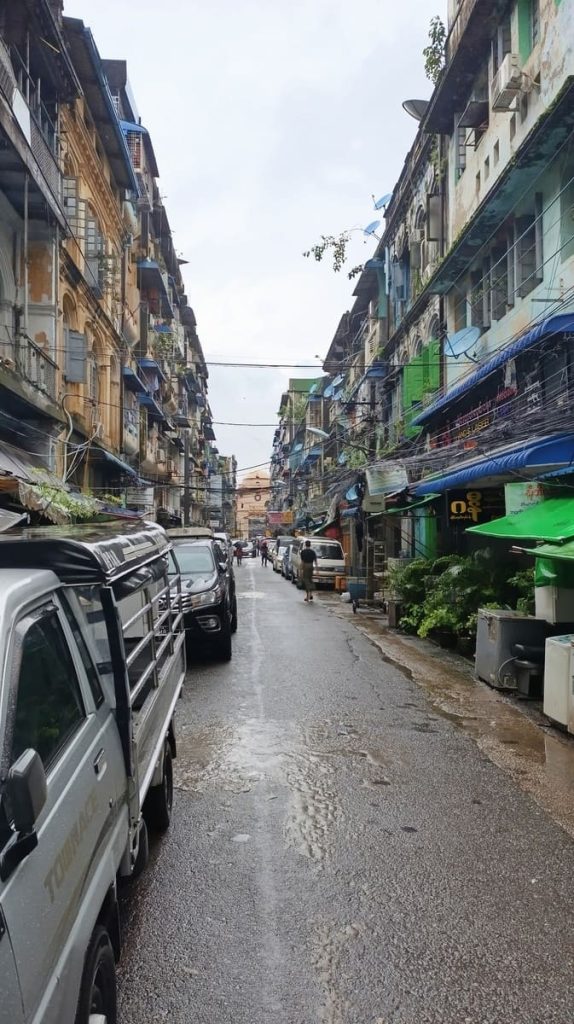
I’m a fan of Indian food and Yangon’s rich heritage allowed me to find a few different options for breakfast. The section that can be informally called “Little India” is on Anawrahta Road between 25th and 32nd streets.
You can pick the one you like there. Keep your eyes peeled for Ingyin Nwe South Indian Food Centre.
Bogyoke Aung San Market
It’s also called “Scott’s Market” after its founder, Gavin Scott. His Burmese contemporaries were split down the middle as to whether he had done nothing for Burma or more than any other person. He was apparently so polarizing.
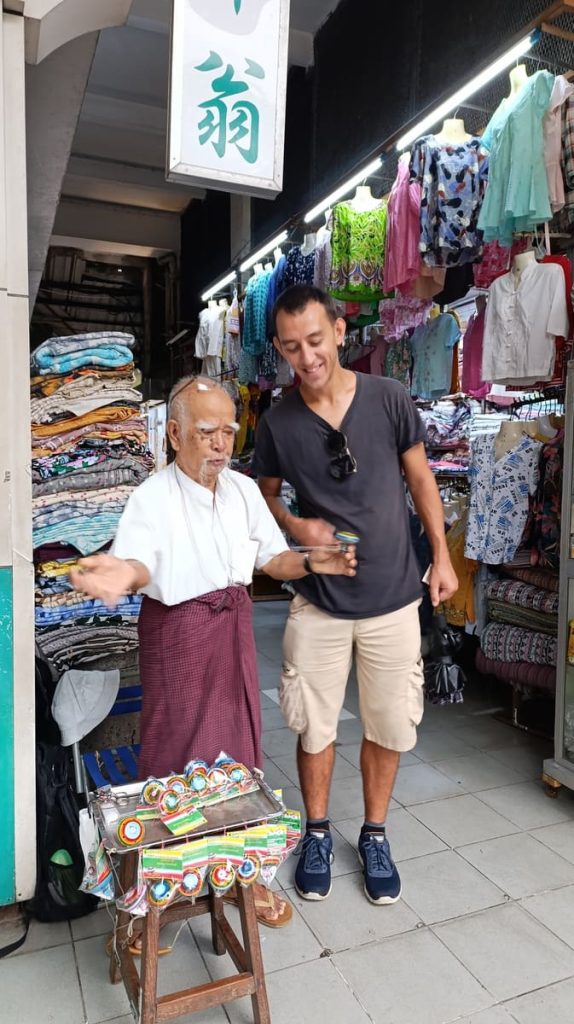

The market itself is square with rows of vendors selling clothes, textiles, jewelry, all sorts of traditional Burmese memorabilia, medicines, dried food, etc.
It reminded me of the Ben Thanh Market in Ho Chi Minh City although it was very quiet when I went. A far cry from the constant touting and the crowds in Vietnam’s largest city.
However, I can almost guarantee that someone will approach you to offer black market exchange services. I advise you to go to an exchange bureau instead. See what to expect and how to manage money in Myanmar.
The market is open from 9:00 to 17:30 every day except Mondays.
Palm Reading at Sule Pagoda
The Burmese people are very superstitious.
Numerology, astrology, palmistry, fortune tellers… very popular in Myanmar. Numbers are vital to the politics of Burma.
Ordinary Yangonites often go to palm readers. You can find their small “offices” decorated with pictures of palms with lines and their meaning as you circle around Sule Pagoda.
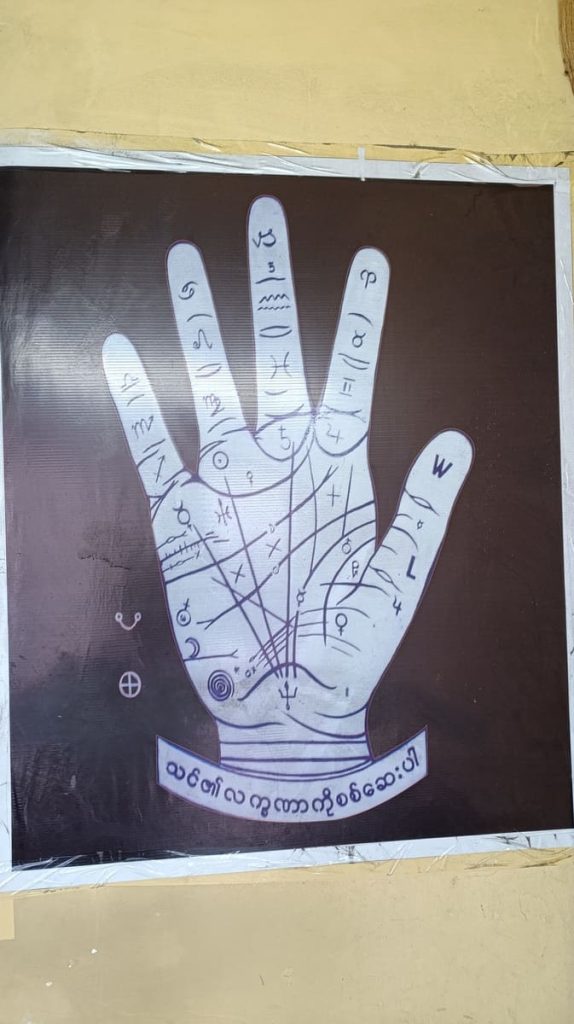

Some palm readers speak English (albeit with an accent and sometimes barely understandable) and will tell you all about your future based only on your palm, age, and birthdate!
To me, it’s all cold reading and general blah blah but don’t let this stop you from having a memorable experience!
A 15-minute session costs 8.000 MMK, negotiable.
Colonial Architecture
As you approach Sule Pagoda, look around you. Some of the buildings are as if taken from Victorian England. Yes, they most certainly were built with this style in mind!
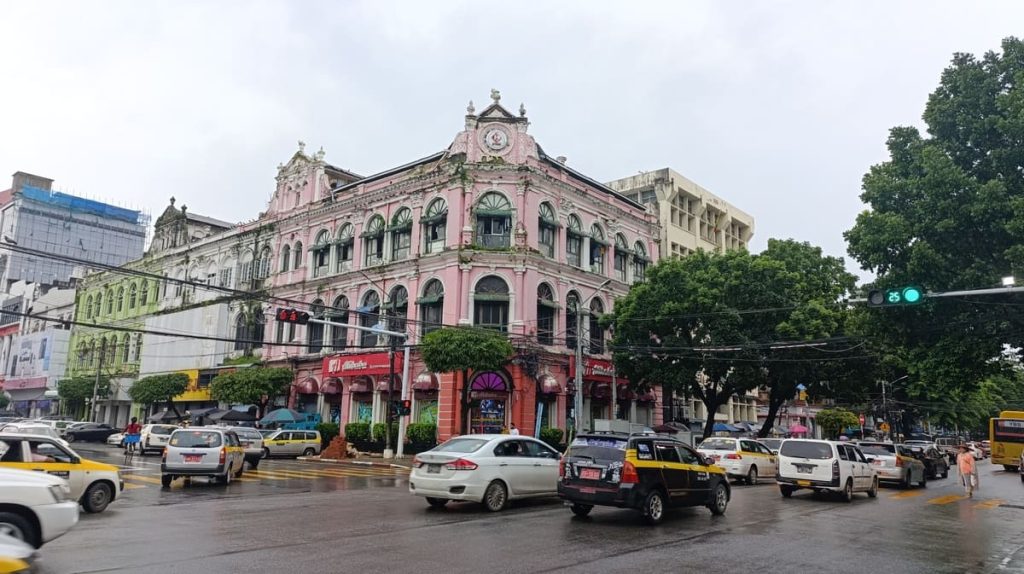
Just across the road is the Yangon City Hall, an imposing, grand building merging colonial staunchness with a Burmese touch (if you don’t see it, take a look at the roof decorations).
Elsewhere in the city, you will find Rander House, now transformed into the Tax Revenue Department.
Check out the Strand Hotel – historically the most prestigious hotel in Yangon. It was closed in 2023 but the facade is intact.
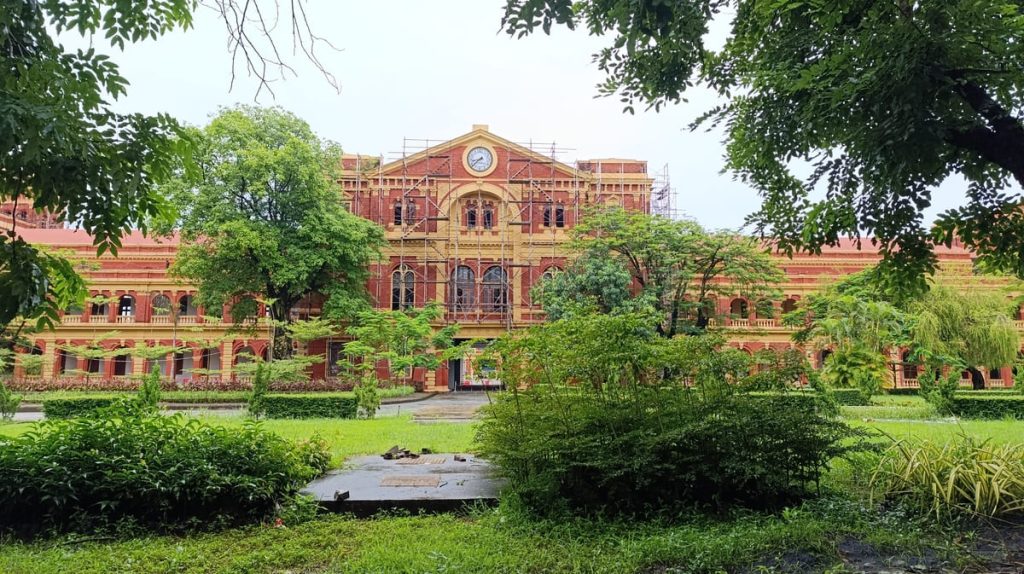
Some of the other notable colonial buildings that form the “Yangon Heritage Trust” include:
- The Secretariat
- The Governor’s Residence
- The post and telegraph office
- St Mary’s Cathedral
- Many residential and government office buildings in the Downtown area
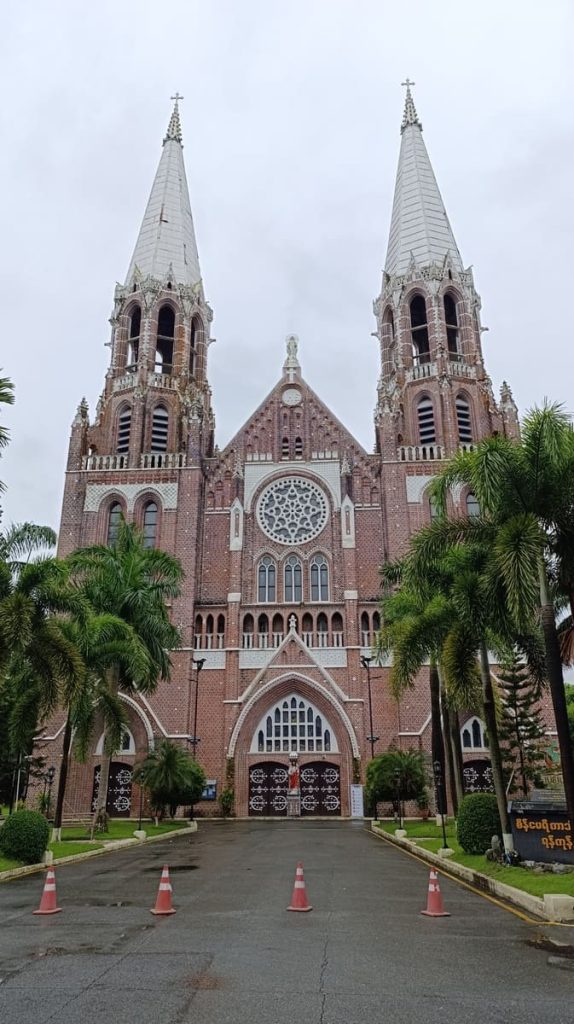
Check out this virtual walking tour for more pictures and places with colonial history in Yangon.
Have Burmese Tea (and lunch)
If you go to Myanmar and don’t have some Burmese milk tea, it’s a trip wasted.
Reminiscent of the masala tea in India and teh tarik in Malaysia, the Burmese tea is the common drink of choice in Myanmar. And it’s so delicious!
Ask for milk curd inside. It looks odd but I guarantee it tastes amazing.
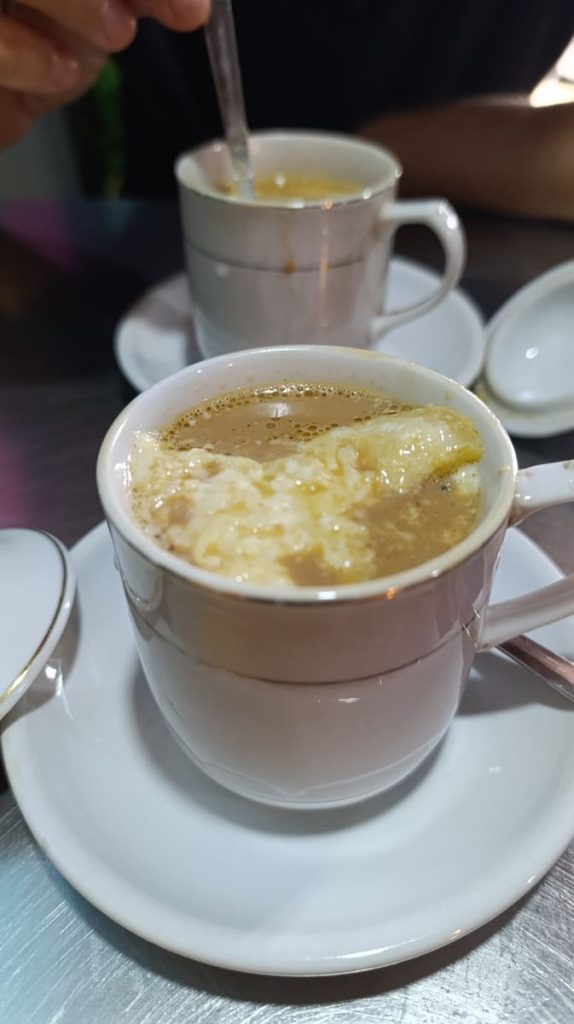
I recommend Bandula Cafe where you can also have something to eat for lunch.
Afternoon in Yangon
If the morning was dedicated to Yangon’s architectural heritage and colonial history, then the afternoon’s highlights are religion and spirituality.
Yes, this is a jam-packed 1 day in Yangon. You may consider leaving some places for day 2. But it’s doable.
Also take a look at these tours, if perhaps you want a more structured, guided experience:
Botahtaung Pagoda
Disclaimer: If you only have time (or energy or mental tolerance) for 1 pagoda, skip Botahtaung in favor of Shwedagon.
Botahtaung and Shwedagon share a similar legend – 2600 years ago two Burmese brothers traveled west to meet the new Buddha and seek to learn his lessons.
Upon meeting him, they gave him honey and rice and he gifted them 8 strands of his hair. The story of these 8 hairs is a long and fascinating one which you can learn inside Botahtaung Pagoda.
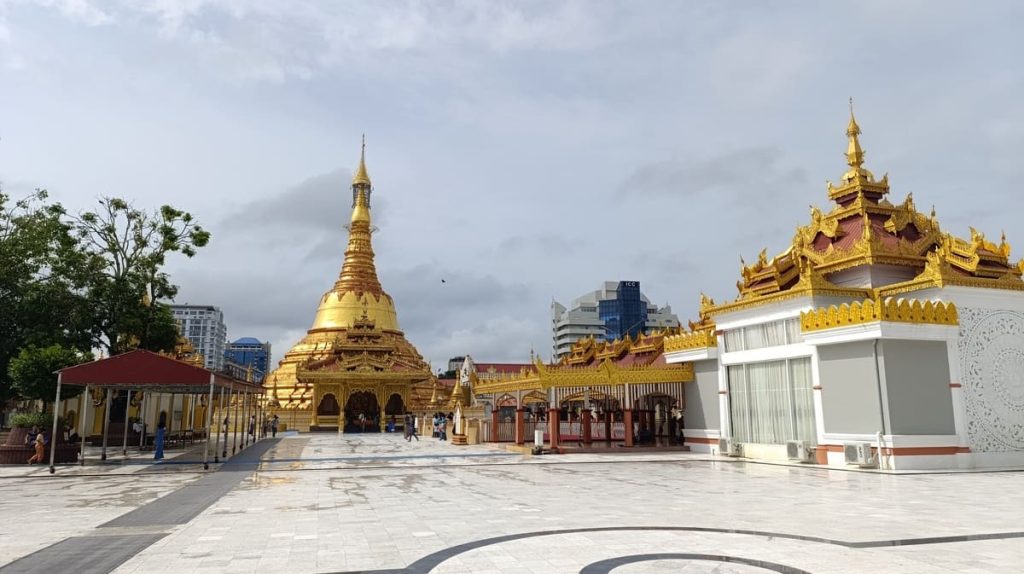
One of the sacred hairs was enshrined inside.
The interior of Botahtaung is such that you can circumnavigate it, surrounded by gold and relics. I can imagine it’s a humbling experience for every Buddhist.

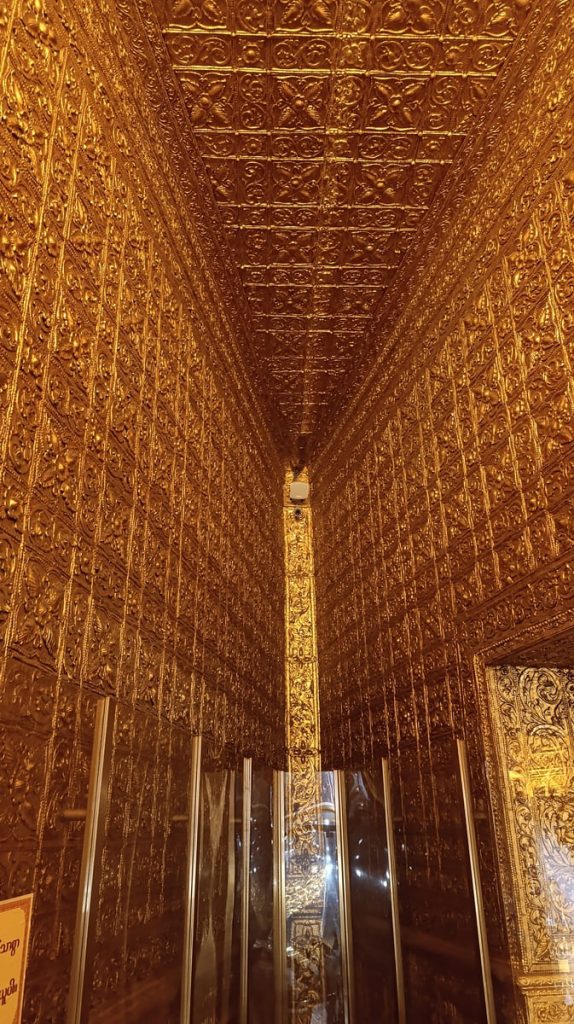
Botahtaung is open daily from 4:00 to 20:00.
The entrance fee for foreigners is 15.000 MMK (~3$ on the ever-changing black market rate). You have to remove your shoes and socks and put them in a locker before going in.
Take the public transport
Ditch the taxis and hop on one of the 100+ bus lines crisscrossing the city.
The public transport can be hard to navigate as all information, destinations, and stops are in the Burmese script. But the locals are very friendly and will tell you which number to take to reach your destination.
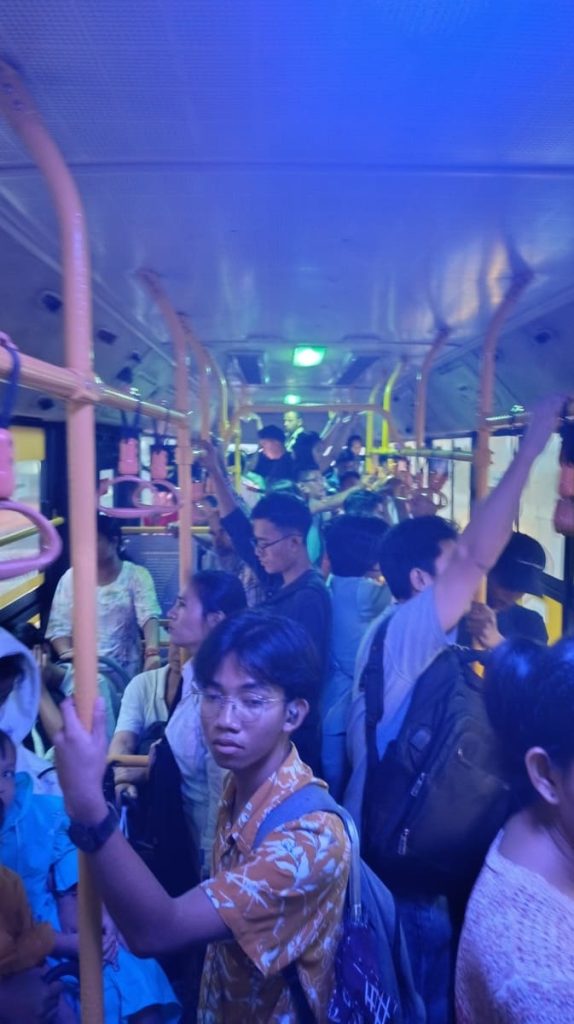
Fares are 200-400 MMK depending on the line and you pay by dropping the money in a box next to the driver as you enter the bus.
If you’re at Botahtaung and want to get to Shwedagon, take a bus to Sule Pagoda, then change to another. Navigating yourself is difficult even with a map of for Yangon’s buses, so just ask someone at the nearest bus stop.
Shwedagon Pagoda
I have so much to share about the Shwedagon Pagoda! It’s history, the stolen bell (now missing but would be biggest in the world if found), the astrological signs, the symbolism, the rituals, the way it’s so much more than a simple Buddhist Pagoda…
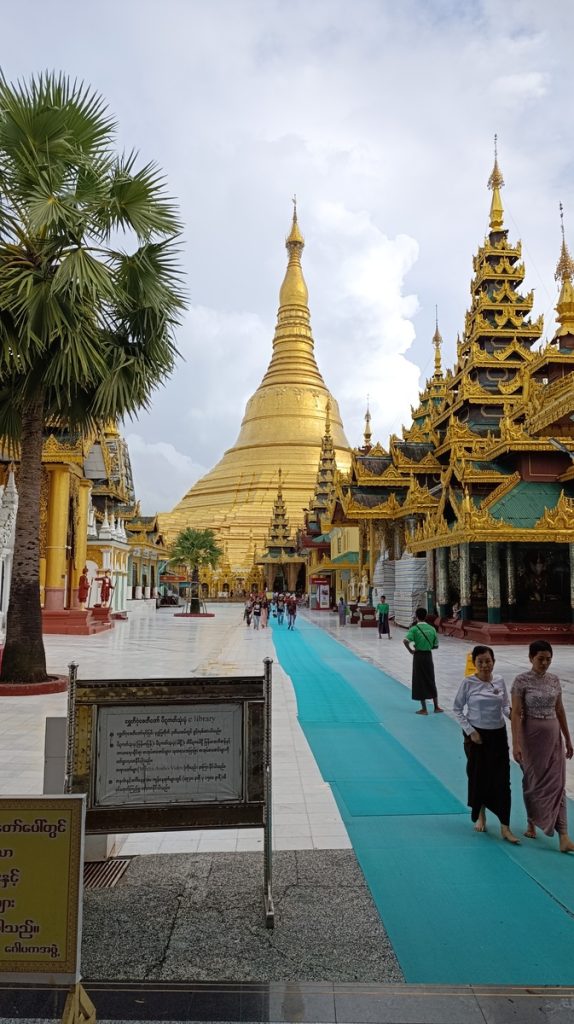
I can write a whole separate post just about it!
Oh, wait! You know what? I have done just that!
Read all about the Shwedagon Pagoda here!
Night Market
Most cities in Southeast Asia have at least 1 night market and Yangon is no exception. I’ll share the 2 more popular places to have food and fun after dark.
Strand Road
The Night Market on Strand Road (just a few minutes from Sule Pagoda) is the main one in Yangon.
A line of hawkers, vendor tents, and small shops occupies most of the pavement. Street food stalls, skewers ready to be grilled, noodle soups, rice cakes, fresh fruits, I can go on.
There are even small street bars serving local Burmese beer and stronger alcohol.
19th Street
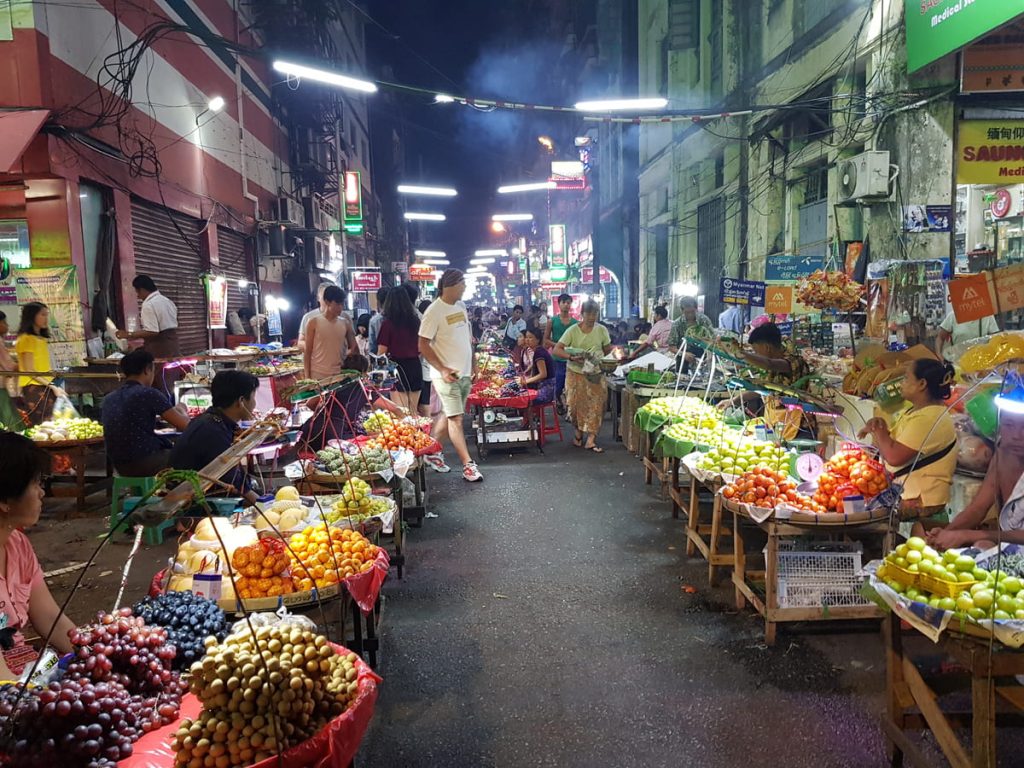
Right in the middle of Chinatown, you can find the ever-busy 19th street.
Lined with bars and eateries, this is perhaps the busiest place in Yangon after 7 PM.
The street is narrow and it feels even narrower due to the street bars occupying a quarter of it on both sides. For an evening of beers in Yangon, 19th Street is the place to go. Note that most close around 23:00 due to the curfew. See below for bars open through the night.
Don’t skip on the barbeque or the fresh grilled fish!
Yangon after dark
Yangon has had a curfew since the military coup of 2021. It’s now between 00:00 and 4:00. You are not allowed to be outside on the streets but you can be indoors in a bar or a club.
Young Yangonites haven’t stopped partying – it’s not forbidden! It’s just that you should not go home before 4 AM – wait until that time and return to your hotel afterward.
Some popular bars in Yangon include:
Other places to visit in Yangon (2-3 days)
While I believe 1 day is quite enough for Yangon, if you have more time there are other places to visit.
Or perhaps you have an overnight bus to Bagan or Inle Lake and need to fill up the day before the time comes to go to the bus station.
Chaukhtatgyi Buddha Temple
The Chaukhtatgyi Buddha Temple is an important religious site in Yangon. The reason it’s not on the main 1 day itinerary above is because it’s a little out of the way and just getting to it and back will take you at least 2 hours.
The main attraction in the temple is a giant 65-meter-long reclining Buddha. The symbols on his feet are intriguing even if you don’t understand the significance (I confess I don’t).
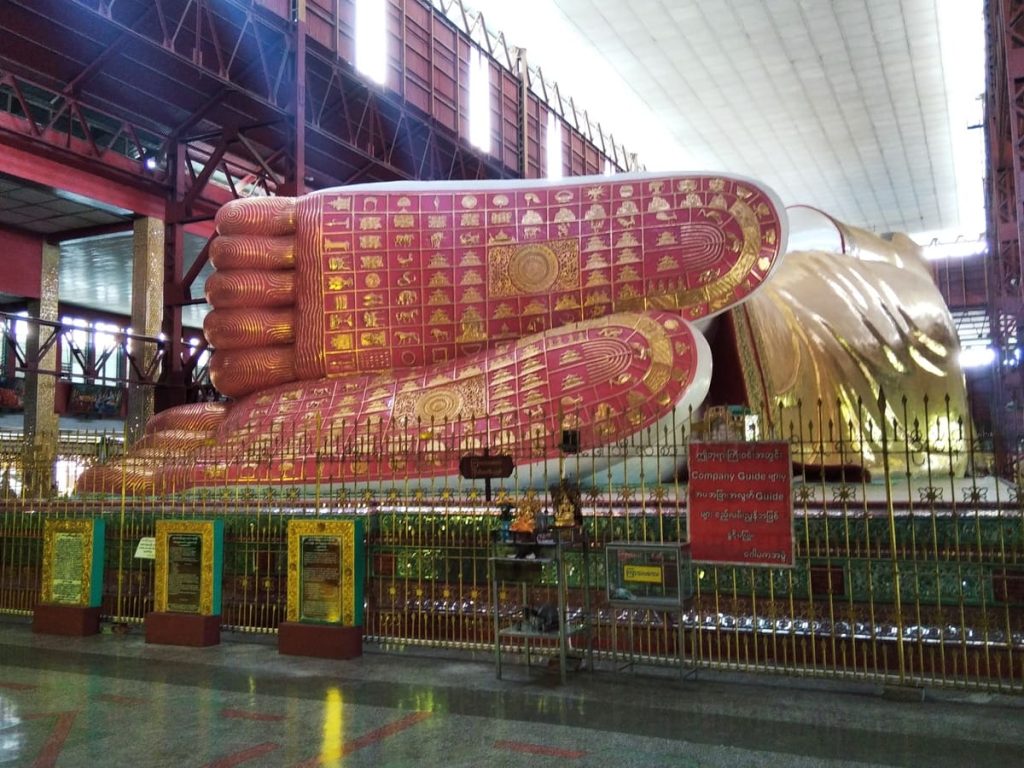
Don’t forget to cover your arms and legs before you visit.
Unlike other Yangonian pagodas, this one is free to enter even for foreigners.
Kandawgyi Lake and Park

Very near Shwedagon Pagoda, on the other side of the main road, you can find Yangon’s most beautiful lake.
The park is in a commendably good condition and there are paved walkways, wooden bridges, viewpoints towards Shwedagon, animal statues, revolutionary statues, shaped trees, a restaurant, and a bunch of temples.
National Museum
The National Museum houses exhibits from all over Myanmar and from every different historical epoch. From dinosaur bones to modern Burmese art.
The most spectacular exhibit is the Royal Lion Throne of the last king of Burma. There used to be 8, but 7 were destroyed during WW2. This one survived because it wasn’t in Burma but rather for safekeeping in Kolkata and later returned.
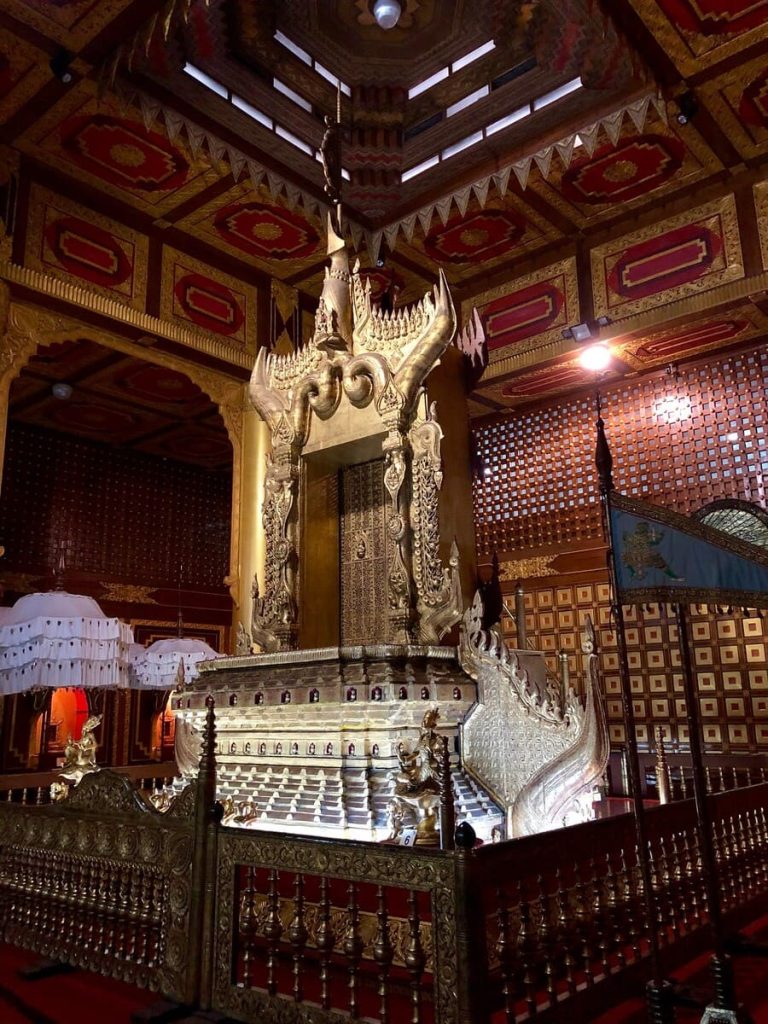
The museum spans 5 floors and surprisingly many signs are translated into English.
It’s open from 9:30 to 16:30 except on Mondays when it’s closed. The entrance fee is 10.000 MMK (~2$) for foreigners.
Where next?
Until the complicated situation in Myanmar gets resolved, it’s best to stick only to the main tourist kite of:
- Bagan and its temples (check information about the bus from Yangon to Bagan)
- Mandalay and its royal history
- Inle Lake with its nature and many ethnic groups
Do you like this post? Pin it for later!
